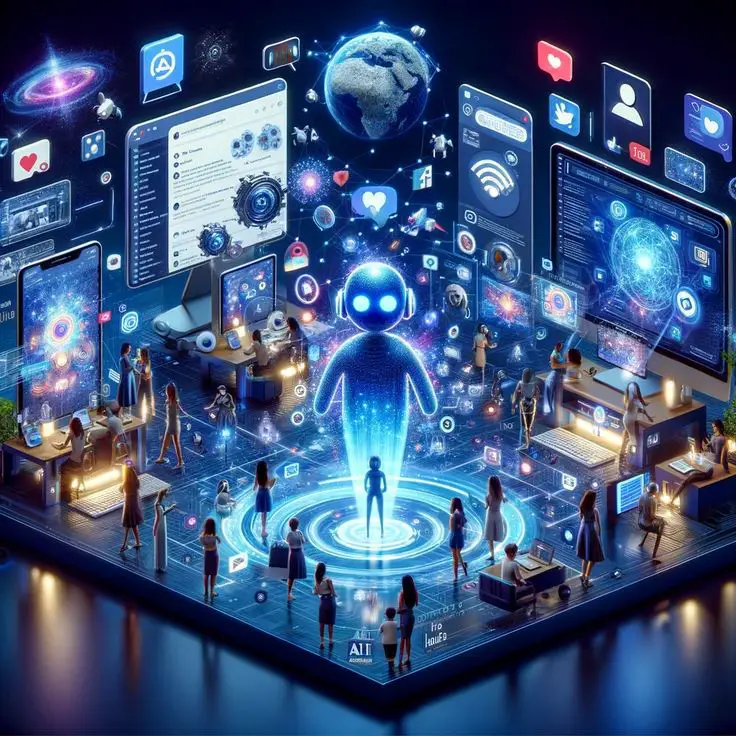Understanding the Social and Emotional Implications of AI-Generated Responses
Artificial Intelligence (AI) is becoming an integral part of our daily interactions, especially through AI-generated responses. These responses can be found in customer service chatbots, virtual assistants, and even in social media interactions. While AI-generated responses offer convenience and efficiency, it’s important to understand their social and emotional implications. This article explores these implications in simple terms.
What Are AI-Generated Responses?
AI-generated responses are replies created by computer programs using algorithms and machine learning. These responses can mimic human conversation, providing answers, support, and even emotional responses based on the input they receive.
Benefits of AI-Generated Responses
- Availability: AI is available 24/7, offering immediate responses without the need for human presence.
- Efficiency: AI can handle multiple inquiries simultaneously, improving response times and service efficiency.
- Consistency: AI provides consistent responses, ensuring that information is uniformly delivered.
Social Implications of AI-Generated Responses
Reduced Human Interaction
- Less Personal Touch: AI responses can lack the personal touch that human interactions provide. This can lead to feelings of impersonality and disconnection.
- Changing Communication Norms: As AI becomes more common, our expectations and norms around communication may shift, prioritizing speed and efficiency over depth and empathy.
Dependence on Technology
- Reliance on AI: Increased use of AI-generated responses can lead to over-reliance on technology for communication, reducing our skills in face-to-face interactions.
- Digital Divide: Not everyone has equal access to AI technology, potentially widening the gap between those who do and those who don’t.
Emotional Implications of AI-Generated Responses

Limited Empathy
- Lack of Genuine Emotion: AI can simulate empathy but cannot truly understand or feel emotions. This limitation can make interactions feel superficial.
- Emotional Misunderstanding: AI may misinterpret the emotional tone of a user’s input, leading to inappropriate or unhelpful responses.
Impact on Mental Health
- Support and Isolation: While AI can provide support, it cannot replace the emotional depth of human relationships. Over-reliance on AI for emotional support can lead to feelings of isolation.
- Stress and Frustration: Miscommunications with AI can cause stress and frustration, especially if the AI fails to understand or appropriately respond to user needs.
Balancing AI and Human Interaction
Tips for Healthy AI Use
- Use AI as a Tool: Treat AI-generated responses as tools that complement, not replace, human interaction. Use AI for efficiency but seek human interaction for emotional support.
- Maintain Human Connections: Regularly engage in face-to-face or real-time conversations with friends, family, and colleagues to keep your social skills sharp.
- Be Aware of Limitations: Recognize the limitations of AI in understanding and responding to emotions. Use AI for practical tasks and rely on humans for emotional and nuanced conversations.
- Seek Human Help When Needed: For complex emotional issues or when you need genuine empathy, seek support from trusted humans, such as friends, family, or mental health professionals.
Conclusion
AI-generated responses offer many benefits, including availability, efficiency, and consistency. However, it’s important to be aware of their social and emotional implications. Reduced human interaction, dependence on technology, and limited empathy are key concerns. By using AI responsibly and maintaining strong human connections, we can enjoy the benefits of AI-generated responses while safeguarding our social and emotional well-being.
AI is a powerful tool that can enhance our lives when used appropriately. Understanding its limitations and potential impacts can help us navigate our interactions with AI thoughtfully and responsibly.
READ MORE :
https://www.frontiersin.org/journals/psychology/articles/10.3389/fpsyg.2024.1348083/full









